Il libro Il Potenziale Umano ha aperto una quantità di riflessioni in molti campi. E’ un libro che sta cambiando il modo di intendere il coaching, il fitness e la cultura del wellness nella direzione di un rapporto mente corpo olistico e nuovo.
Così, ieri sera, al Tempio (Ready to Fight, culla storica della Muay Thai a Ferrara) entro e sul bancone d’ingresso trovo la rivista “Il Nuovo Club”, e con grande sorpresa, vedo il tema del Potenziale Umano al centro esatto della copertina… Ma vuoi vedere che si parla del mio libro? Andiamo a vedere, ed in effetti, è così.
Che soddisfazione! Ma anche che sorpresa trovarlo in una palestra di Arti Marziali e Sport da Ring… proprio li dove appena posso mi alleno, e in un campo dove lo scetticismo domina.
Il pensiero è che l’approccio allo sport sia ancora troppo distante dai concetti di crescita personale, mentre i fitness club e chiunque opera nello sport e nel coaching sportivo, se desidera vendere di più e fare un servizio davvero migliore, deve iniziare a vedere la persona nella sua interezza.
Qui un flash di quanto trovato ma ne esporrò uno stralcio dopo le immagini
- Link per la pagina Facbook del libro: https://www.facebook.com/potenzialeumano/
- Link per la pagina del libro Potenziale Umano su Amazon
Per un approfondimento di Fitness Coaching e Potenziale Umano, ecco il mio pensiero connesso al volume
© Dott. Daniele Trevisani www.studiotrevisani.it – rielaborato dal testo
Il potenziale umano. Metodi e tecniche di coaching e training per lo sviluppo delle performance
Applicazione del Potenziale Umano al Fitness e allo Sport per i Centri Fitness.
I Dieci Comandamenti del LifeCoaching, FitCoaching e approccio al Coaching nel Centro Fitness
- Il problema critico di ogni persona e di ogni organizzazione è quello di potersi esprimere (self-expression), sviluppare progetti e idee di cui essere fiero ed orgoglioso (self-achievements), avere pieno accesso e rendere concreto il proprio potenziale personale (self-actualization), e…dare senso alla vita (life-meaning). Se non teniamo in mente questi punti abbiamo sbagliato in partenza. La gente non vuole sollevare pesi per il gusto di farlo o muovere cavi e macchine perchè non sa cosa fare, vuole gustarsi l’esperienza, vuole socializzare, vuole avere un corpo di cui essere fiera. La gente non va in palestra per sentirsi soffocare, vuole respirare. Le persone non cercano macchine per le macchine o corsi per i corsi, vogliono il beneficio che ne deriva, vogliono sentirsi vive… una ragazza non fa aerobica solo per sudare, vuole uscire con le amiche e amici sentendosi più snella. Nel club si cerca socialità, amicizie, uscire dalle 4 mura di casa, sentirsi vivi, avere un posto di sfogo delle tensioni, allontanarsi dallo stress del lavoro, si cerca ascolto o attenzione mentre tutti ti vorrebbero persuadere, si cerca allentamento dalle pressioni. Ognuno ha il proprio sfondo motivazionale diverso. Dobbiamo connetterci con il vero motivo (in profondità) che muove le persone verso i centri fitness, le motivazioni profonde, lo “sfondo pulsionale”, non ignorarlo.
- Il LifeCoach aiuta il cliente a fissare gli achievements, a chiarire cosa desidera cosa lo realizza (actualization), ad esprimersi fisicamente e psicologicamente con sessioni allenanti produttive, scelta di discipline e time management settimanale e mensile (fissare goals e rivederli), definire un programma annuale di lavoro o comunque di periodo sufficiente a generare impatto, abbinate uno stile di vita efficace diretto verso i propri obiettivi.
- Il nostro potenziale personale è sfuggente, tante volte ci è accanto, senza che noi ce ne accorgiamo nemmeno. Come un seme di una quercia contiene già l’intera pianta, come un ruscello che può diventare fiume, la missione dell’uomo è valorizzare se stesso ed esprimere tutto ciò che di positivo ha da dare. Il coach vede ciò che il cliente può diventare e non solo il cliente come ci appare ora. Vede la statua nel blocco di marmo, aiuta a farla emergere, giorno dopo giorno, con grande passione. Vivere le passioni e vivere con passione è sentire la vita pulsare. Non farlo significa castrarsi da soli, amputarsi, darla vinta alla morte prima del tempo. O, cosa peggiore, perdere senza lottare, dirsi no, da soli. Il LifeCoach vede ogni cliente come un seme di una pianta che curerà con amore, non importa quale sia il suo stato attuale di sviluppo, principiante, agonista, bello, brutto, simpatico, antipatico: è una persona da aiutare in un percorso che il cliente stesso non conosce nemmeno e ancora meno pensa sia possibile. Non può saperne abbastanza di fitness e wellness altrimenti farebbe il coach o il medico. Facciamogli vedere nuovi orizzonti di benessere fisico e mentale, aiutiamolo a raggiungerli.
- Essere pienamente umani significa riempire di senso la vita stessa, un dono prezioso, una vita che ci scorre dentro e a lato… come un fiume, che volte non lasciamo fluire, o il cui corso viene strozzato, bloccato… a volte dagli altri, o – quello che è peggio – da noi stessi. Il LifeCoach individua e si attiva per identificare i blocchi che impediscono al potenziale del cliente di esprimersi. Localizza i ragionamenti improduttivi, le credenze sbagliate (es, non io.., è troppo difficile… non adesso… non lo posso fare a prescindere), sostiene il loro superamento, accompagna, mostra, aiuta, supporta, in altre parole, fa! Agisce sul piano olistico, non solo fisico ma soprattutto psicologico.
- Il LifeCoach opera per programmi, traduce un progetto in tempi, fasi, aree di lavoro, sessioni, obiettivi, azione. Non si creano miracoli senza continuità. I LifeCoach non sono “venditori di facilità” ma sono venditori di continuità e puntano alla fidelizzazione, al “ciclo di vita del cliente” e non al suo mese.
- Dobbiamo stimolare passione attraverso le sensazioni… le sensazioni allenanti, istante dopo istante, generano la sensazione complessiva di un allenamento. La passione è per ciò che possiamo essere, per le vite che potremmo vivere, per le sensazioni che potremmo avere, passa attraverso la sensazione che la persona ha muovendo il corpo, usando le macchine o i cavi e gli attrezzi, guardandosi allo specchio, valutando i cambiamenti nell’umore con cui esce dalla palestra e persino a come ci si alza la mattina. Il LifeCoach conosce ed individua i metodi motivazionali per far si che il cliente si impegni in un programma almeno annuale di sviluppo e di attività di crescita personale. Agisce per fidelizzare il cliente verso un programma di lungo periodo e non ad un approccio mordi e fuggi. Opera sull’ingegneria delle sensazioni (sensations engineering) per far si che ogni sessione allenante e ogni attività extra-sportiva correlata (alimentazione, riposo, tempo libero), inserita nel programma, offra sensazioni positive e di crescita.
- I clienti dei centri fitness vivono un’enorme quantità di aspettative, di sogni psicologici e drammi psicologici associati al vissuto del Centro fitness – essere più belli, stare meglio, diventare più seduttivi, sentirsi giovani, incontrare persone, sentirsi vivi, sentirsi all’altezza dello stare nel Centro – e noi dobbiamo entrare è in contatto con questi sentimenti ed esigenze profonde, non starne alla superficie. La fase d’intervista periodica al Cliente è il metodo fondamentale del coaching, e questa non va condotta solo all’inizio in modo approfondito, ma riproposta a tratti in ogni singola sessione di lavoro (Come senti questo esercizio? Senti lavorare il muscolo? Come è andata questa sessione? Dove senti progressi e dove no?).
- Il credo assoluto di un buon LifeCoach e di un buon FitCoach è che ognuno di noi ha un enorme patrimonio di risorse, sia latenti che costruibili attivamente, la sacralità dell’essere umano e il forte bisogno di non sprecare nemmeno una vita, nemmeno un giorno, nemmeno un minuto, in qualcosa che non sia legato ad una visione positiva e di crescita.
La disgrazia del mondo del coaching sta nell’impreparazione. Per essere veramente coach nel campo del wellness, fitness e sport, occorre esperienza sul campo, occorrono competenze psicologiche e competenze relative alle scienze sportive e ai mondi psicologici del Cliente. Qualsiasi sia il punto di partenza di ciascuno (che sarà ad esempio di provenienza atleta, o psicologo, o diplomato in scienze motorie e affini), è indispensabile darsi da fare per procurarsi “l’altro pezzo” di competenze mancanti.
È essenziale inoltre essere padroni di un metodo di lavoro, che nella nostra elabroazione prende il nome di HPM: Human Potential/Performance Modeling, ovvero, dare corpo (modeling) alle potenzialità e alle performance delle persone.
I programmi di formazione sviluppati dall’autore e già disponibili sono finalizzati a questo scopo, ma diamo un’occhiata più da vicino alle sue aree di lavoro.
Il metodo di Sports Coaching e Fitness Coaching HPM concentra l’attenzione su tre aree di lavoro principali:
Figura 1 – Le variabili primarie delle performance e del potenziale su cui agisce il lifecoaching
(1) energie personali: le forze interiori di natura biologica e psicologica, energie fisiche/corporee ed energie psicologiche; il lavoro allenante sul piano fisico e mentale che il coach attiva per il cliente;
(2) competenze: le capacità, abilità (skills), i “saper fare” da generare nel cliente, costruibili tramite preparazione, training, coaching, con l’aiuto di specifiche regie allenanti, regie formative, o regie di cambiamento;
(3) direzionalità: la canalizzazione di energie e competenze del cliente verso “qualcosa” di importante, la ricerca di senso, la visione, causa, lo spirito con cui ci si allena, ideali, volontà, obiettivi, goals, missioni, aspirazioni su di sè o sulla propria vita. In questa viene compreso il senso di orgoglio e di onore per le proprie azioni, le scelte di vivere uno stile di vita legato al fitness o all’essere attivi, e atti di vita, capaci di elevare la persona oltre la mediocrità, il che significa darsi obiettivi e raggiungerli, anche sfidanti, e sul piano esistenziale, come per un padre voler gareggiare con il figlio alla pari, o per una madre sentirsi ancora giovane nell’andare a prendere a scuola il figlio; per un ragazzo sentire il proprio corpo come un aiuto e non un peso, per una ragazza essere sicura di sè, migliorare la propria autostima e la sicurezza in sè, e, non da meno, amare il dono della vita che vive tramite il corpo e rendergli omaggio.
Ci piace dare l’immagine del fatto che un lavoro serio e integrato su queste aree sia una lotta, una battaglia positiva, una guerra all’ignoranza, alla stasi, al pressapochismo, all’ipocrisia, alle catene, all’apatia del vivere spento… un viaggio verso la libertà e l’emancipazione di se stessi e degli altri.
In un mondo apatico, il recupero di uno spirito guerriero e combattivo è quanto mai urgente, soprattutto per cause nobili e positive, come la salute, il benessere fisico e psicologico. Una persona sana e forte psicologicamente e fisicamente è una miniera di energie per la società, è una persona in grado di aiutare, di contribuire, e quindi la nostra causa ha un fine di elevazione sociale importante.
Questo insieme di aree – se deve diventare metodo di lavoro – ha bisogno di strumenti utili per chi agisce come trainer, coach, formatore, psicologo, o counselor, ma anche come manager e leader, chi deve iniettare spirito propulsivo nel centro fitness o in un club sportivo.
Lavorare su se stessi e avere un metodo per farlo è estremamente utile anche per chi decide di agire sul proprio sviluppo personale.
__
Dott. Daniele Trevisani
Formatore Senior, consulente, Coach, Master of Arts in Communication alla University of Florida (USA). È titolare dell’omonimo studio www.studiotrevisani.it ed è tra i principali protagonisti della ricerca sul Potenziale Umano. È inoltre esperto in tecniche di coaching e di formazione per la leadership e gli sport di combattimento, fitness e wellness. È stato docente a contratto del corso di Teorie e Tecniche della Formazione della Facoltà di Scienze della Comunicazione dell’Università di Bologna, ed inoltre Mental Trainer in settori agonistici di sport di squadra e arti marziali, istruttore di fitness e direttore di club sportivi. Opera come coach e dirige le attività di formazione formatori e formazione e certificazione di coach nella Scuola di Coaching STEP.

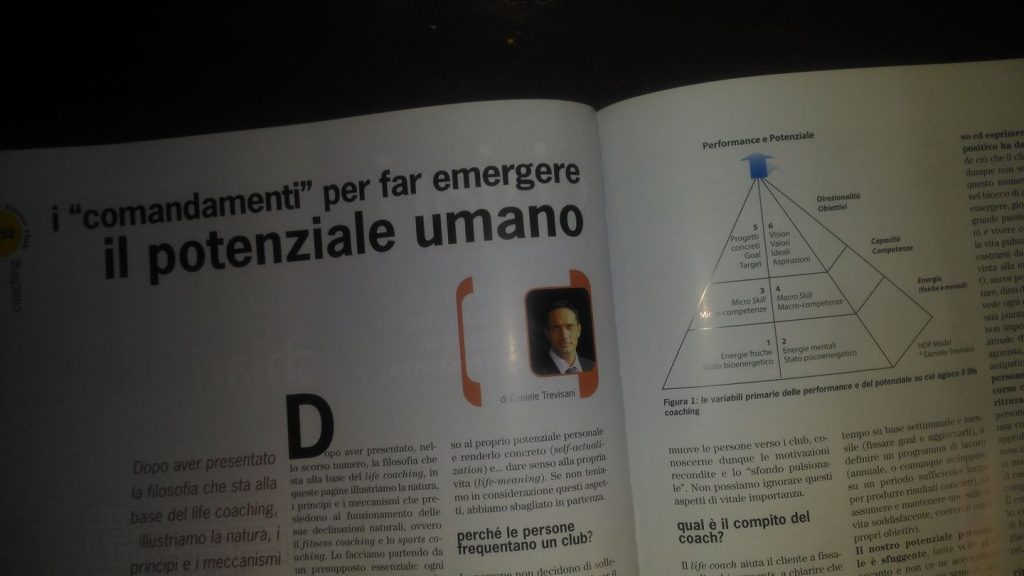
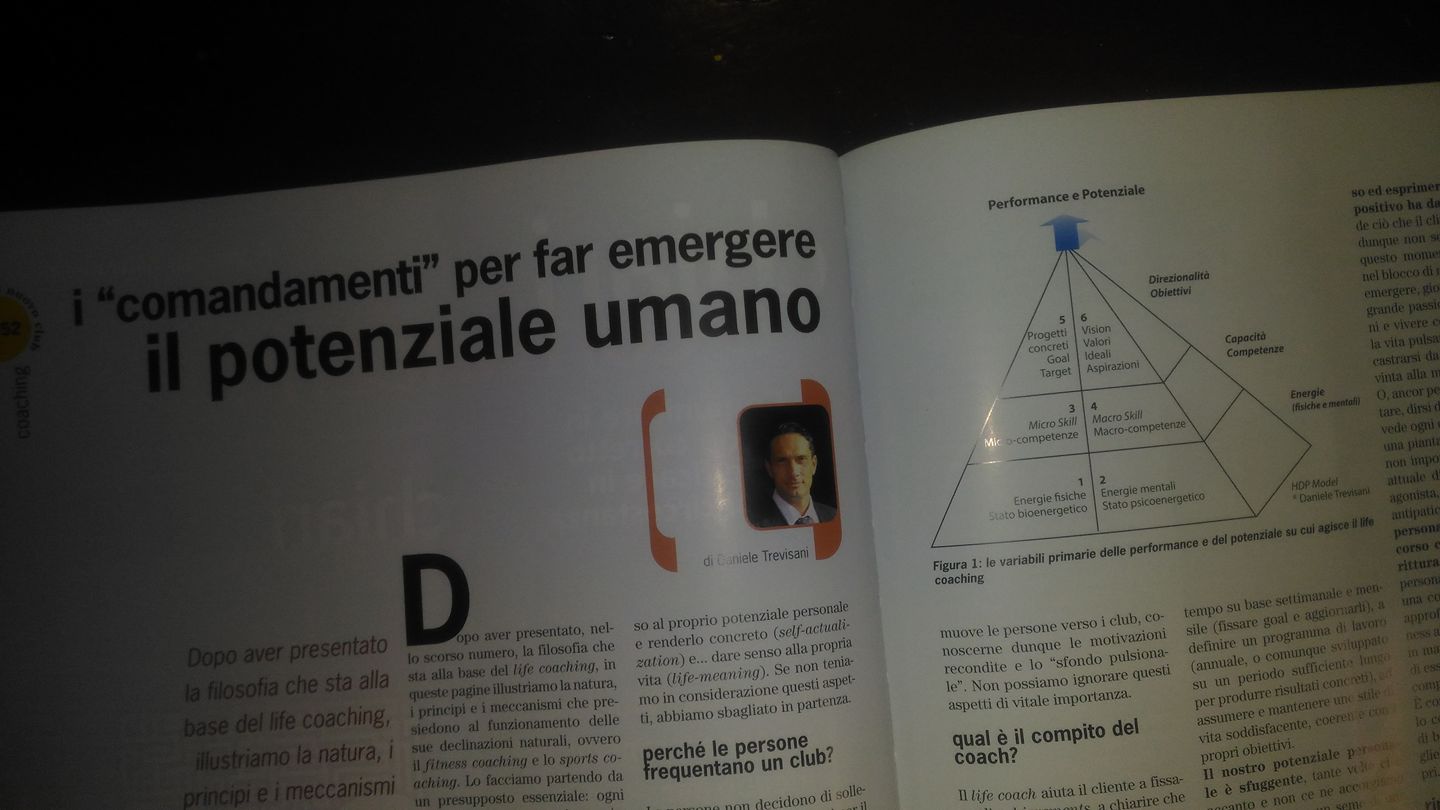
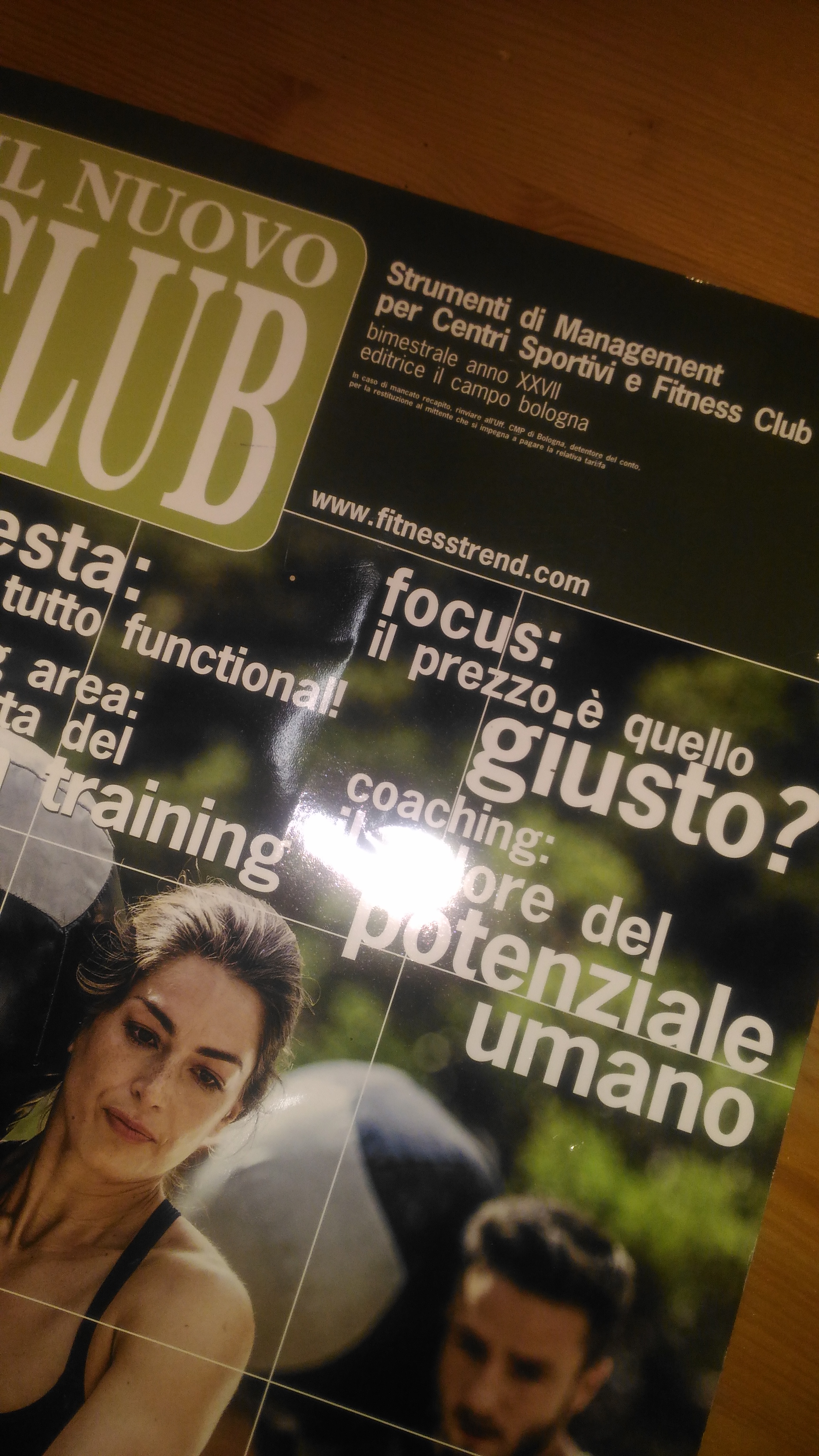
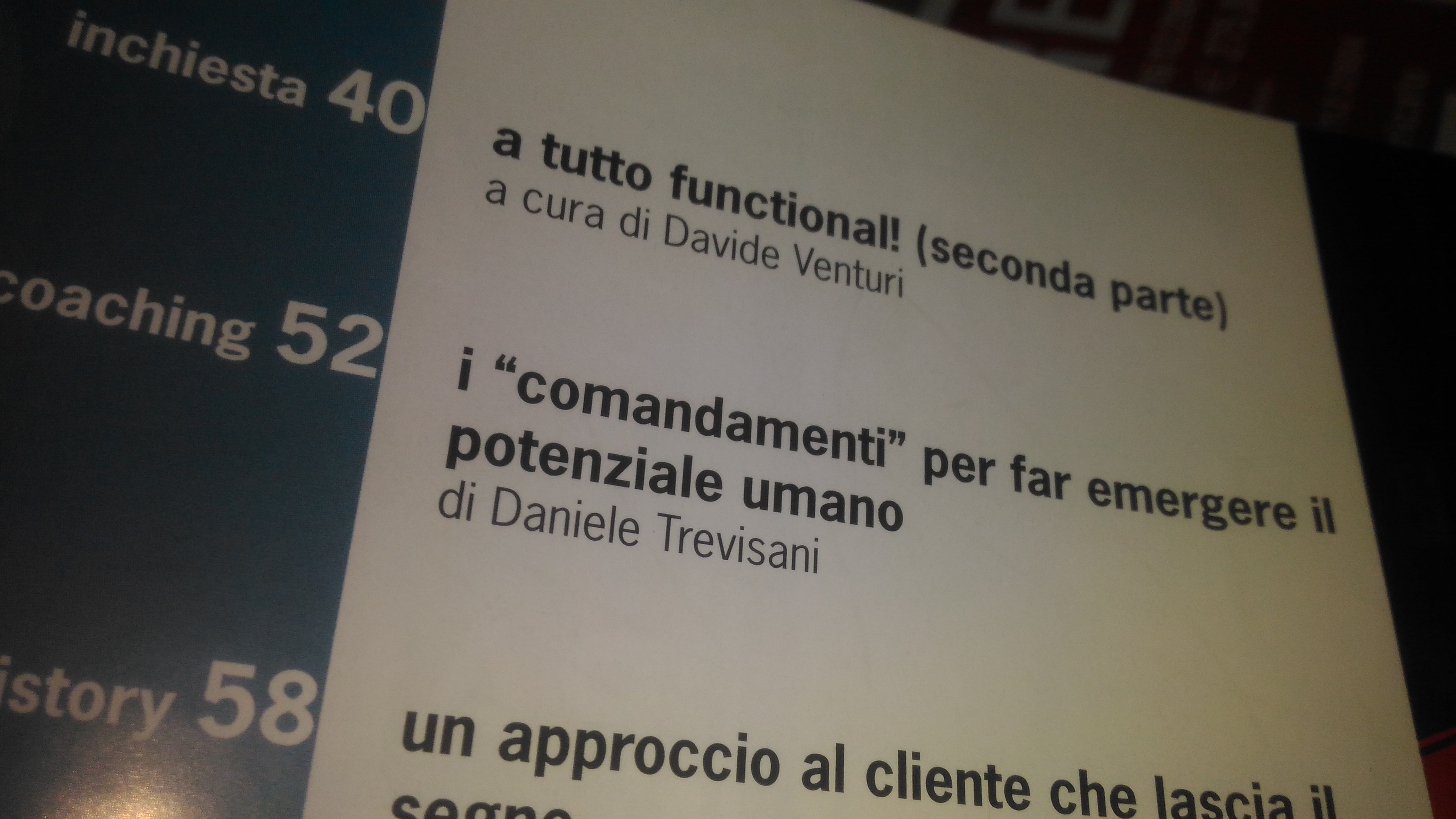
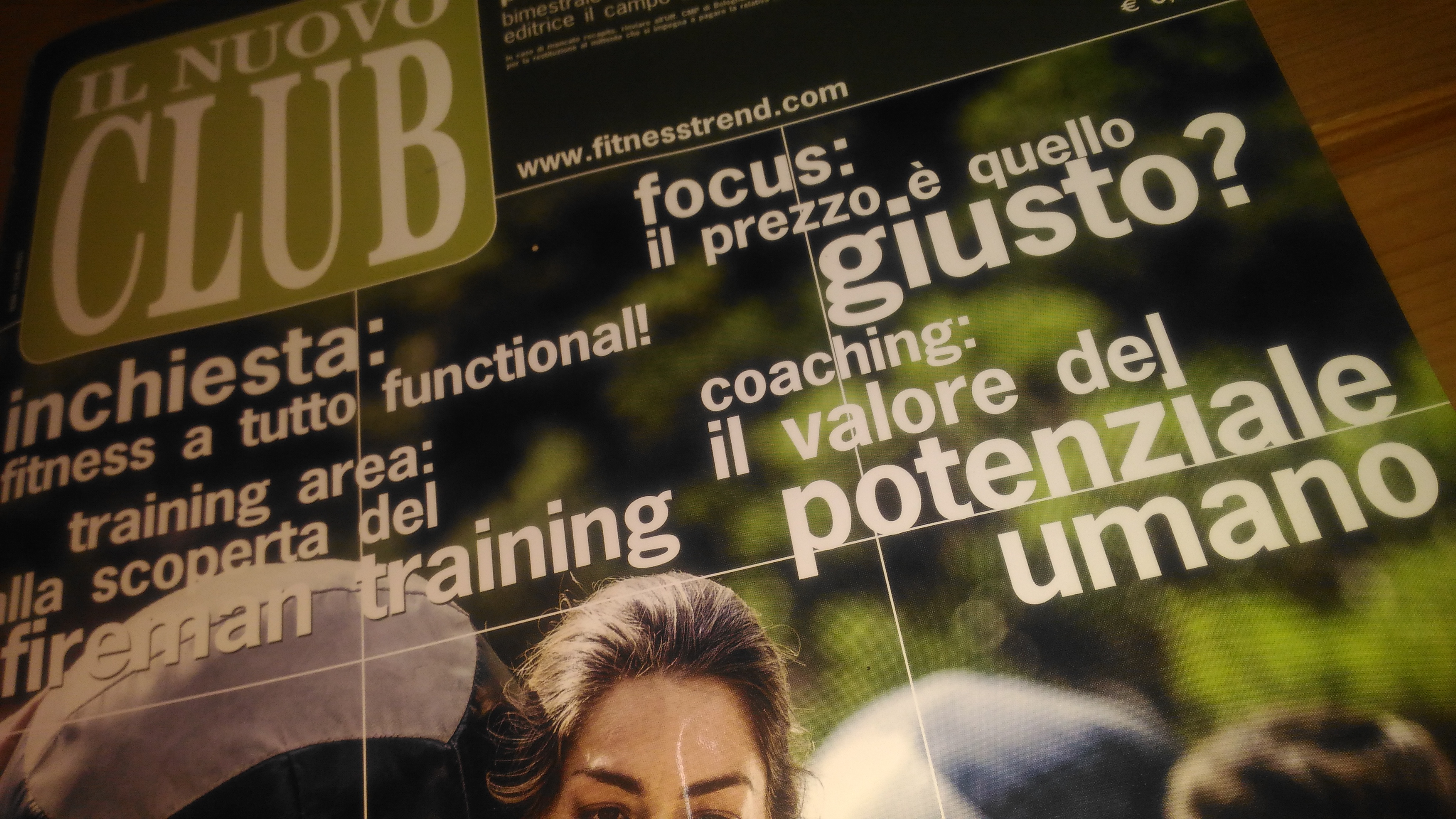
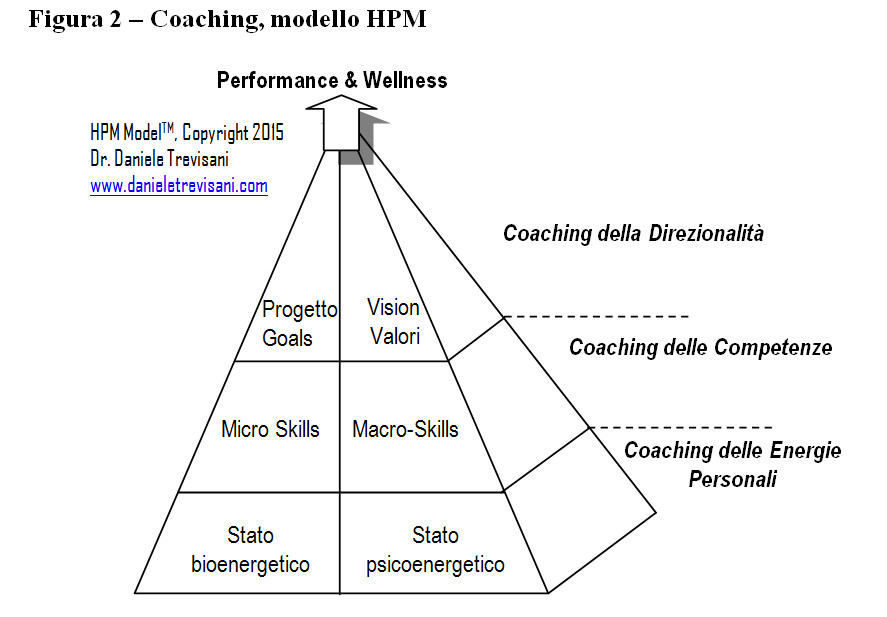
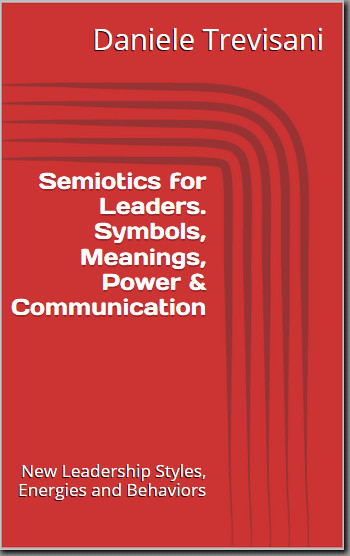
 If you change your beliefs, you can change your expectations. If as a leader you set some strong beliefs, they will turn into different expectations.
If you change your beliefs, you can change your expectations. If as a leader you set some strong beliefs, they will turn into different expectations.